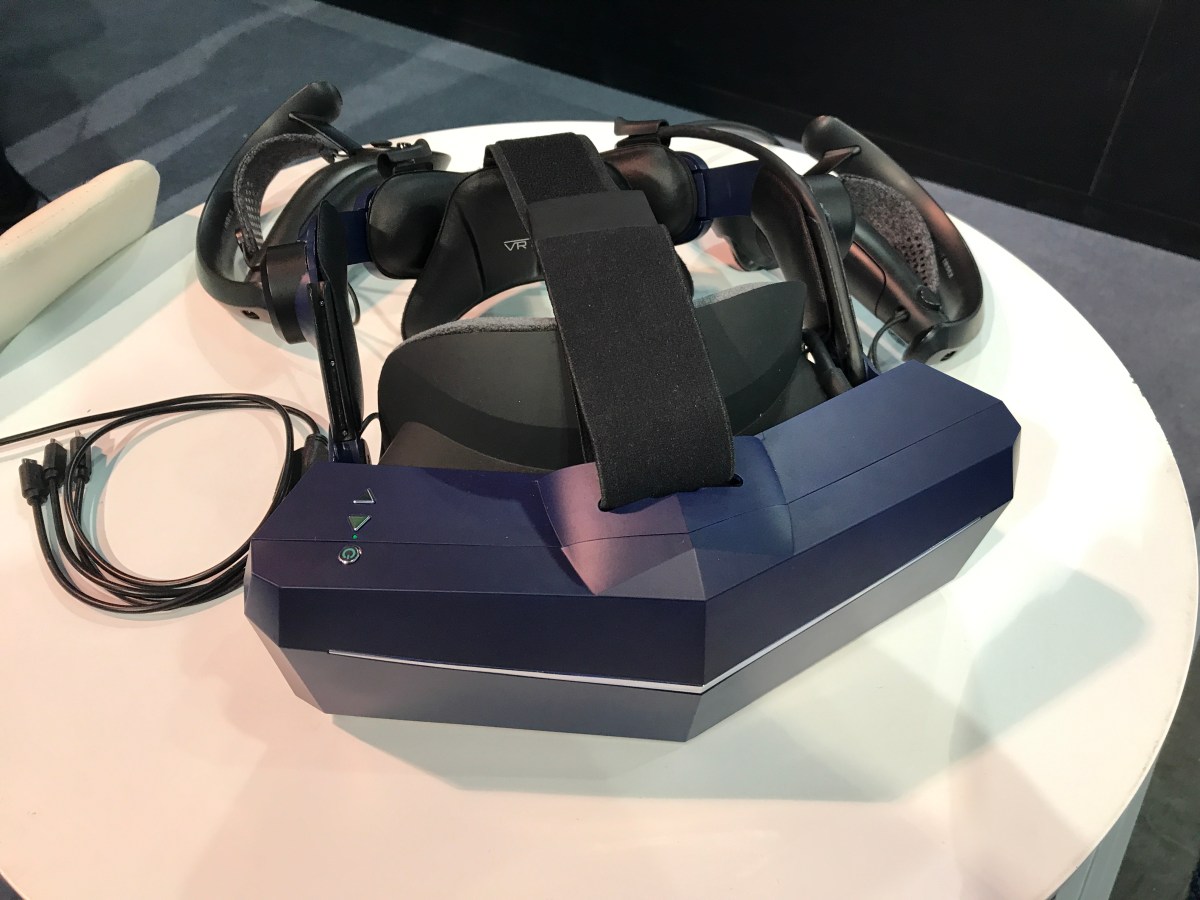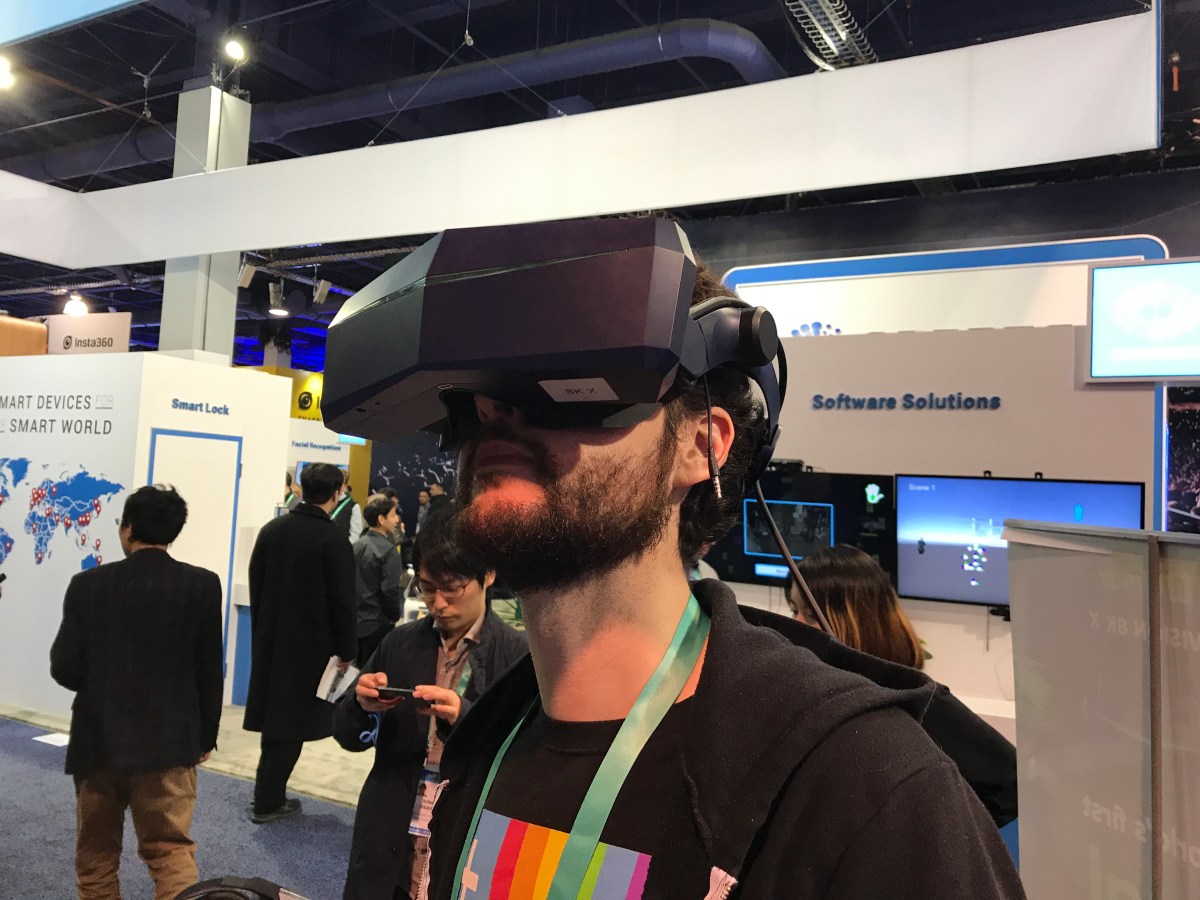VR enthusiasts sat up and took notice when Pimax opened a Kickstarter for its 8K headset in October of 2017. The reason is exactly what you’d suspect. With 8K resolution, Pimax’s promised headset offered a new standard for VR clarity. Nearly six thousand backers pledged over 4.2 million dollars and awaited its January 2018 delivery.
And waited. And waited. And waited. The initial goodwill earned by the company’s pie-in-the-sky aspirations faded as backers had to wait longer and longer for headsets to deliver.

Now, at CES 2020, the long-awaited 8K headset is here, and it has all the specs. The twin 4K displays are backed up by a 200 degree field-of-view that’s far more immersive than competitors. It also has built-in audio jacks to support headsets, compatibility with Steam VR and Oculus game (through Pimax software), and a refresh rate up to 90Hz.

Is it glorious? Oh, yes, it’s glorious. I’ve grown jaded to VR over the years, but the Pimax 8K X brought on the giddy smile from my first VR experiences. 8K is a drastic bump over competitors like the Valve Index which, for comparison, has two 1,440 x 1,600 screens.
The jump in clarity was obvious from the moment I put on the headset. Fine text is often difficult to read on competing headsets, and details can appear obscured or heavily aliased. Not so on the Pimax 8K X. The demo, a simple flight simulator loop, presented me with many small gauges to read. I had no problem making them out.
The Pimax has something most headsets lack; a real sense of peripheral vision.
It’s a huge leap from playing Elite Dangerous on the Oculus Rift DK1, where interface details were often headache-inducing to read. It’s a smaller leap over the Valve Index, but still noticeable.
The increased field of view is less impressive at first but, as I settled in, the benefit became more obvious. The Oculus Quest has a 90-degree field of view, while the Valve Index has a 130-degree field of view. The Pimax’s 200-degree field of view provides something those headsets lack; a real sense of peripheral vision. To me, it’s not a night-and-day difference, but it does lead to a more natural, less claustrophobic experience.
8K resolution is awesome, but there’s a problem. Performance. You’re going to need an extremely powerful system. The company recommends a Nvidia RTX 2080 for full 8K mode. To take off the edge, the headset offers Dual Engine Mode, which can lower the render resolution to 2,560 x 1,440 per display and then upscale that to 4K. Upscale Mode is the only way to achieve the maximum 90Hz refresh rate (8K runs at 75Hz) and reduces the recommended graphics card to Nvidia’s RTX 2060.

No one will call the Pimax 8K X sleek. Its broad, angular design is required to make a 200-degree field of view possible. I worried the bulk would be annoying, but I had no problem once I slipped it on. The well-padded headset stayed in place. I felt its weight, but about equal to a Vive Pro. My hands-on time was limited, however, so I can’t say it’ll remain comfortable over long sessions.
The Pimax 8K X retails for $1,299. There’s also a bundle with Valve Index controllers and base stations for the oddly specific price of $1,828. That’s a lot of money for a VR headset. Yet it’s not as much as I’d expect given the Pimax’s wildly impressive hardware. If you want to be on the cutting edge of home VR, the Pimax 8K X is where it’s at.
Editors' Recommendations
- We now know how Apple’s VR headset may handle video, and it’s pretty awesome
- Asus ROG Zephyrus G14 hands-on review: A gaming laptop with its own light show



